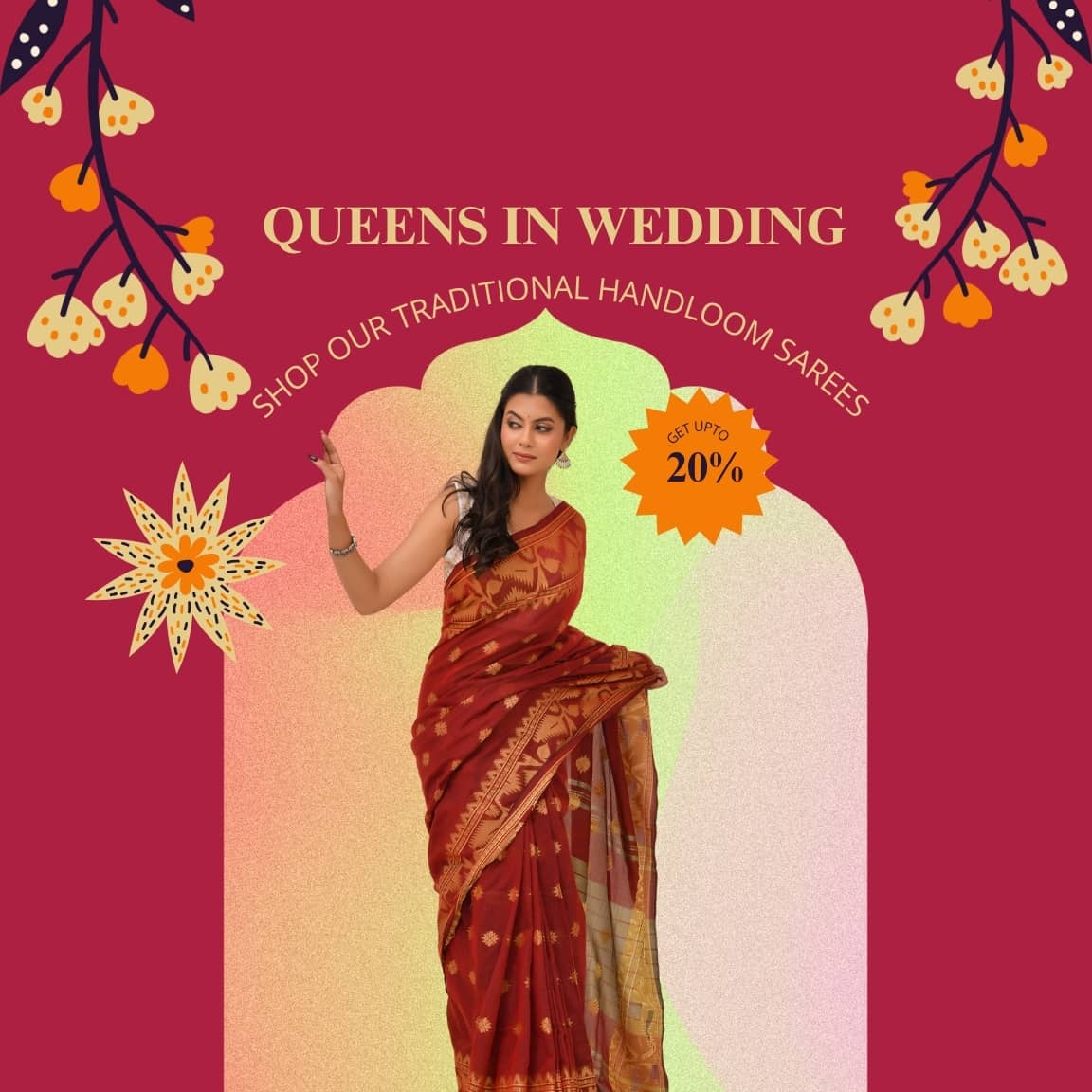In this blog, Kurja takes you on a journey to the weaving colonies of Rajasthan. We explore how the art of Rajasthani handloom sarees flourished over centuries and how you can identify authentic weaves. Here, we focus on Bandhej (Bandhani) art and the heritage of Kota Doria, from a village near Kota, Rajasthan. We will also explore how to identify authentic Rajasthani handloom and the difference between power loom and handloom saree

Where It All Started?
Well, for me, it began in the wild snow of Siberia, where I started my flight and reached the origins of Rajasthani handloom sarees. (You can learn more about Kurja here.)
The earliest traces of Rajasthani handloom can be found nearly 4,000 years ago. However, the art truly flourished between the 8th–18th centuries, when the Rajputana royal courts patronized local artists. This support helped weaving traditions thrive across cities like Jaipur, Bikaner, Jodhpur, Kota, and Udaipur.
Types of Rajasthani Handloom Sarees
Bandhani Sarees
Bandhani work, also known as Bandhej in Rajasthan, is a traditional tie-and-dye technique. The word comes from the Sanskrit “Bandh,” meaning to tie.
Bandhani is also practiced in Gujarat’s Kutch region, but the difference lies in the designs. In Rajasthan, you’ll often see waves, birds, and dot-like motifs.
-
A single Bandhani saree can have 20,000–75,000 tiny knots, each tied by hand.
-
The colors carry meaning:
-
Red = love & marriage (worn by brides)
-
Yellow = spring & happiness
- Black with red/yellow dots = stylish yet auspicious
-
No two Bandhani sarees are alike. The irregularities in knots and dye spread make every piece one of a kind.
The Process of Bandhej Art
-
Start with plain fabric – usually cotton or silk, cleaned and prepared.
-
Tie tiny knots – small sections are pinched and tied with thread; tied spots resist color.
-
Dip in dye – fabric is immersed in dye baths (red, yellow, green, etc.). Untied areas absorb color.
-
Dry & untie – once dry, knots are opened, revealing small dots or motifs.
-
Repeat for multiple colors – tie again → dip → dry → untie.
How to Identify Authentic Bandhani
-
Tiny irregular dots = hand-tied; perfectly uniform = printed.
-
Slight color bleed = real; sharp, flat colors = fake.
-
Raised bumps = genuine handwork.
-
Unique motifs (flowers, waves, animals) = handmade artistry.
-
Too cheap & too perfect = likely machine-printed.
Kota Doria Sarees
Kota is a city in Rajasthan, often known for IIT coaching classes, but it’s equally famous for Kota Doria sarees. The age, origin and history of Kota Doria weaving tradition is around 400 years old.
-
“Doria” comes from “Dori,” meaning thread.
-
The craft began in the 17th century, when Rao Kishore Singh, a Mughal general, brought weavers from Mysore to Kota. The Mysore weaving techniques blended with Rajasthani tradition.
-
Originally woven only for royalty, today Kota Doria is loved across India and beyond.
-
Nicknamed the “air-conditioned saree” for its lightweight comfort.
The Process of Doria Saree Weaving
We met Waseem, an artisan near Kota, who explained the cultural impact of this heritage craft.
1. Preparing the yarn – cotton (sometimes silk) threads are washed, dried, and dyed.
2. Setting up the loom – woven on a pit loom (a loom set into the ground).
3. Weaving the “Khats” – interlacing cotton and silk creates tiny square checks (khats).
-
-
Cotton = strength
-
Silk = shine and softness
4. Adding borders & motifs – zari (gold/silver thread) is woven into borders or inside khats.
5. Finishing – saree is washed, starched lightly, and pressed, ready to drape.
How to Identify Authentic Kota Doria
-
Check for “Khats” → visible tiny square checks.
-
Light but strong → airy, sheer, but not flimsy.
-
Cotton-silk blend → originals combine sturdiness and shine; fakes feel synthetic.
-
Handmade imperfections → slight irregularities show handloom authenticity.
-
Real zari borders → authentic versions use metallic threads, not plastic-like ones.
Explore our all new Handloom Saree Collection: Click here
Wrapping Up
This is how you can identify the authenticity of Bandhej and Kota Doria work.
Explore our collection of authentic handloom sarees here and find modern designs here.
In our next edition, we’ll explore a few more handloom practices — some as old as Mr. Rajeev Shukla (if not older 😉).

